A simulation is an approximate imitation of the operation of a process or system; that represents its operation over time.

A firefighter is a rescuer extensively trained in firefighting, primarily to extinguish hazardous fires that threaten life, property and the environment as well as to rescue people and animals from dangerous situations.

There are four primary emergency services that can be summoned directly by the public:
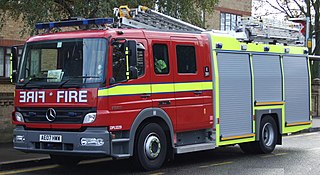
A fire engine, also known in some places as a fire truck or fire lorry, is a road vehicle that functions as a firefighting apparatus. The primary purposes of a fire engine include transporting firefighters to an incident as well as carrying equipment for firefighting and technical rescue operations. Some fire engines have specialised functions, such as hazardous materials mitigation, urban search and rescue, and aircraft rescue and firefighting.
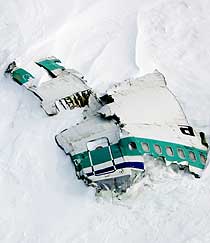
A controlled flight into terrain is an accident in which an airworthy aircraft, under pilot control, is unintentionally flown into the ground, a mountain, a body of water or an obstacle. In a typical CFIT scenario, the crew is unaware of the impending disaster until it is too late. The term was coined by engineers at Boeing in the late 1970s.

Aerial firefighting is the use of aircraft and other aerial resources to combat wildfires. The types of aircraft used include fixed-wing aircraft and helicopters. Smokejumpers and rappellers are also classified as aerial firefighters, delivered to the fire by parachute from a variety of fixed-wing aircraft, or rappelling from helicopters. Chemicals used to fight fires may include water, water enhancers such as foams and gels, and specially formulated fire retardants such as Phos-Chek.

West Coast Air was a Canadian scheduled airline operating de Havilland Canada DHC-6 Twin Otter float planes, which was integrated into Harbour Air Seaplanes.
Firefighting jargon includes a diverse lexicon of both common and idiosyncratic terms. One problem that exists in trying to create a list such as this is that much of the terminology used by a particular department is specifically defined in their particular standing operating procedures, such that two departments may have completely different terms for the same thing. For example, depending on whom one asks, a safety team may be referred to as a standby, a RIT or RIG or RIC, or a FAST. Furthermore, a department may change a definition within its SOP, such that one year it may be RIT, and the next RIG or RIC.
This glossary of wildfire terms is a list of definitions of terms and concepts relevant to wildfires and wildland firefighting. Except where noted, terms have largely been sourced from a 1998 Fireline Handbook transcribed for a Conflict 21 counter-terrorism studies website by the Air National Guard.
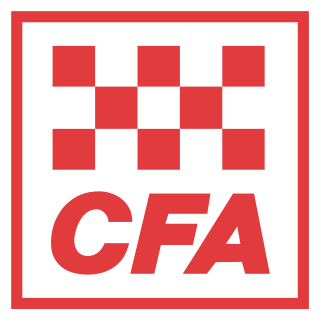
Country Fire Authority (CFA) is a fire service in Victoria, Australia, with other fire services being Department of Environment, Land, Water and Planning (DELWP) and the Metropolitan Fire Brigade (MFB). The CFA provides firefighting and emergency services to rural areas and regional towns in Victoria, and to portions of the outer suburban areas of Melbourne not covered by the MFB. Australian emergency services, including the CFA, can be summoned to assist by dialling the primary emergency service telephone number, 000. Mobile phones also allow a default emergency number, 112, to be dialled.

Aircraft rescue and firefighting (ARFF) is a type of firefighting that involves the emergency response, mitigation, evacuation, and rescue of passengers and crew of aircraft involved in aviation accidents and incidents.
The New Zealand Fire Service was New Zealand's main firefighting body from 1 April 1976 until 1 July 2017 – at which point it was dissolved and incorporated into the new Fire and Emergency New Zealand.

The Airports Authority of India or AAI is a statutory body working under the Ministry of Civil Aviation, Government of India is responsible for creating, upgrading, maintaining and managing civil aviation infrastructure in India. It provides Communication Navigation Surveillance / Air Traffic Management (CNS/ATM) services over Indian airspace and adjoining oceanic areas. It also manages a total of 126 Airports, including 11 International Airports, 11 Customs Airports, 89 Domestic Airports and 26 Civil enclaves at Military Airfields. AAI also has ground installations at all airports and 25 other locations to ensure safety of aircraft operations. AAI covers all major air-routes over Indian landmass via 29 Radar installations at 11 locations along with 700 VOR/DVOR installations co-located with Distance Measuring Equipment (DME). 52 runways are provided with Instrument landing system (ILS) installations with Night Landing Facilities at most of these airports and Automatic Message Switching System at 15 Airports.

Essex County Fire and Rescue Service (ECFRS) is the statutory fire and rescue service for the county of Essex in the east of England, and is one of the largest fire services in the country, covering an area of 1,338 square miles and a population of over 1.7 million people.

The London Fire Brigade, one of the largest fire and rescue services in the world, operates a large and diverse fleet of vehicles, known as appliances, all carrying a varied range of specialised equipment and apparatus for use in firefighting and rescue operations.
The provision of rescue and firefighting services (RFFS) at all airports and aerodromes in the United Kingdom is a requirement under British law and under international agreements set out by the International Civil Aviation Organization.
The ADMS is an emergency and disaster management training simulation system designed to train incident commanders, first responders, and incident command teams in a real-time, interactive virtual reality environment. ADMS was first introduced by Environmental Tectonics Corporation (ETCC:US) in 1992. The development of ADMS was in response to the crash of British Airtours Flight 28M at the Manchester airport in 1985, in which 55 people died. Following the accident research indicated that first responder training should include realistic scenarios. The first ADMS system was produced for the UK Ministry of Defence, and delivered to Royal Air Force's (RAF) Manston Facility. Since its inception, ADMS has evolved into a modular, expandable disaster simulation platform, with systems in use worldwide.
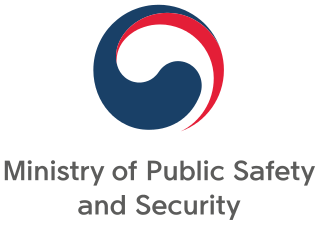
The Ministry of Public Safety and Security was an organization of the national government of South Korea with the responsibility of public safety and security. It was established on November 19, 2014 with a merger of the National Emergency Management Agency, Korea Coast Guard, a branch of Safety of Ministry of Security and Public Administration to prevent and efficiently respond to national disasters. It has its headquarters in the Seoul Government Complex.
Unmanned aircraft system simulation focuses on training pilots to control an unmanned aircraft or its payload from a control station. Flight simulation involves a device that artificially re-creates aircraft flight and the environment in which it flies for pilot training, design, or other purposes. It includes replicating the equations that govern how aircraft fly, how they react to applications of flight controls, the effects of other aircraft systems, and how the aircraft reacts to external factors such as air density, turbulence, wind shear, cloud, precipitation, etc.
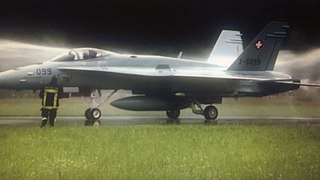
The Hugo Wolf F/A-18C simulator is a realistic non-flying replica of a McDonnell Douglas F/A-18 Hornet, used as an interactive training simulator for operational ground staff. It is fitted with specialised equipment to simulate various emergency scenarios. Two examples are used by the Swiss Air Force.













